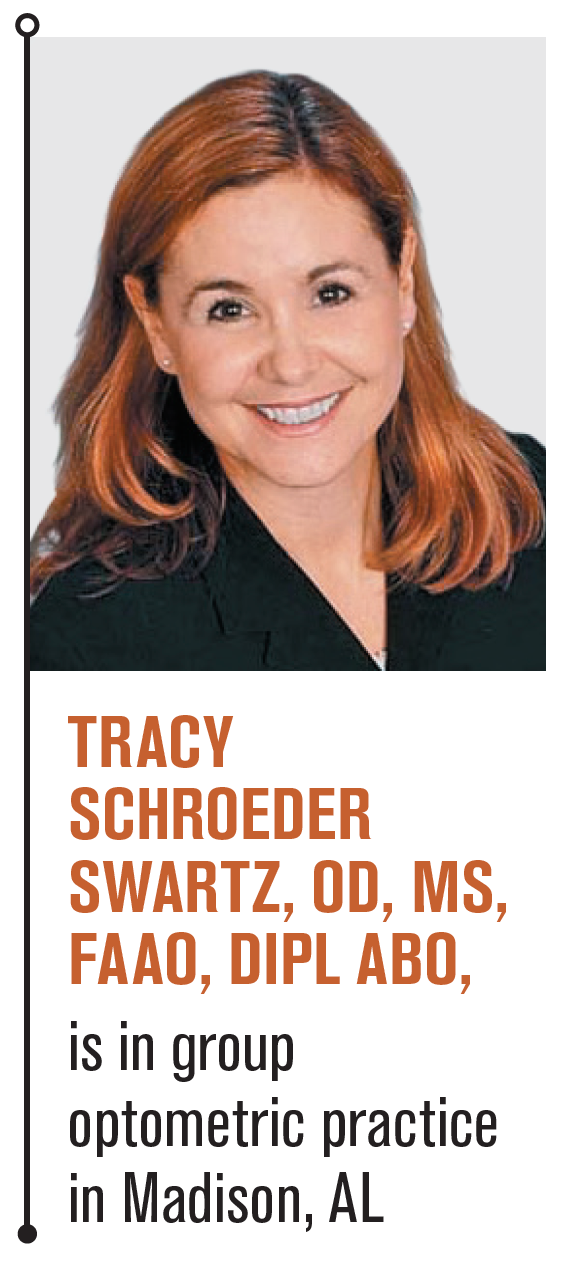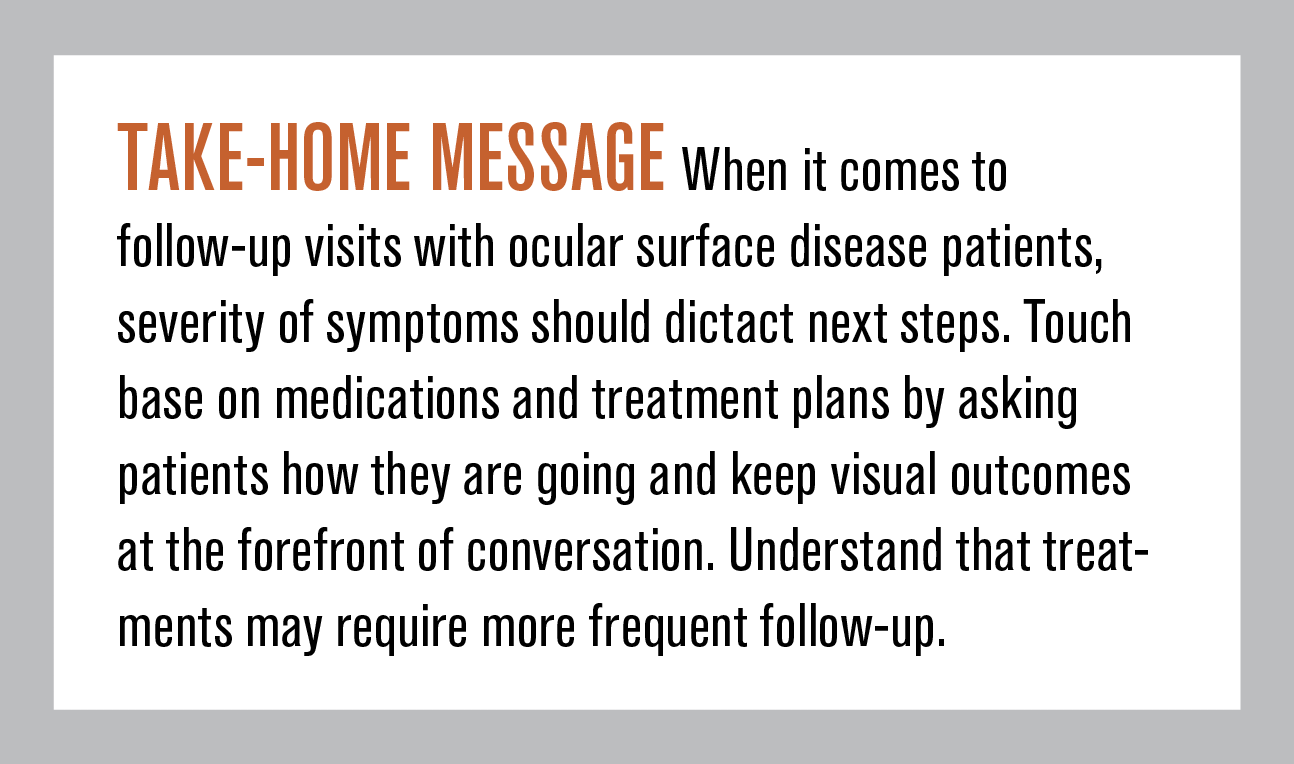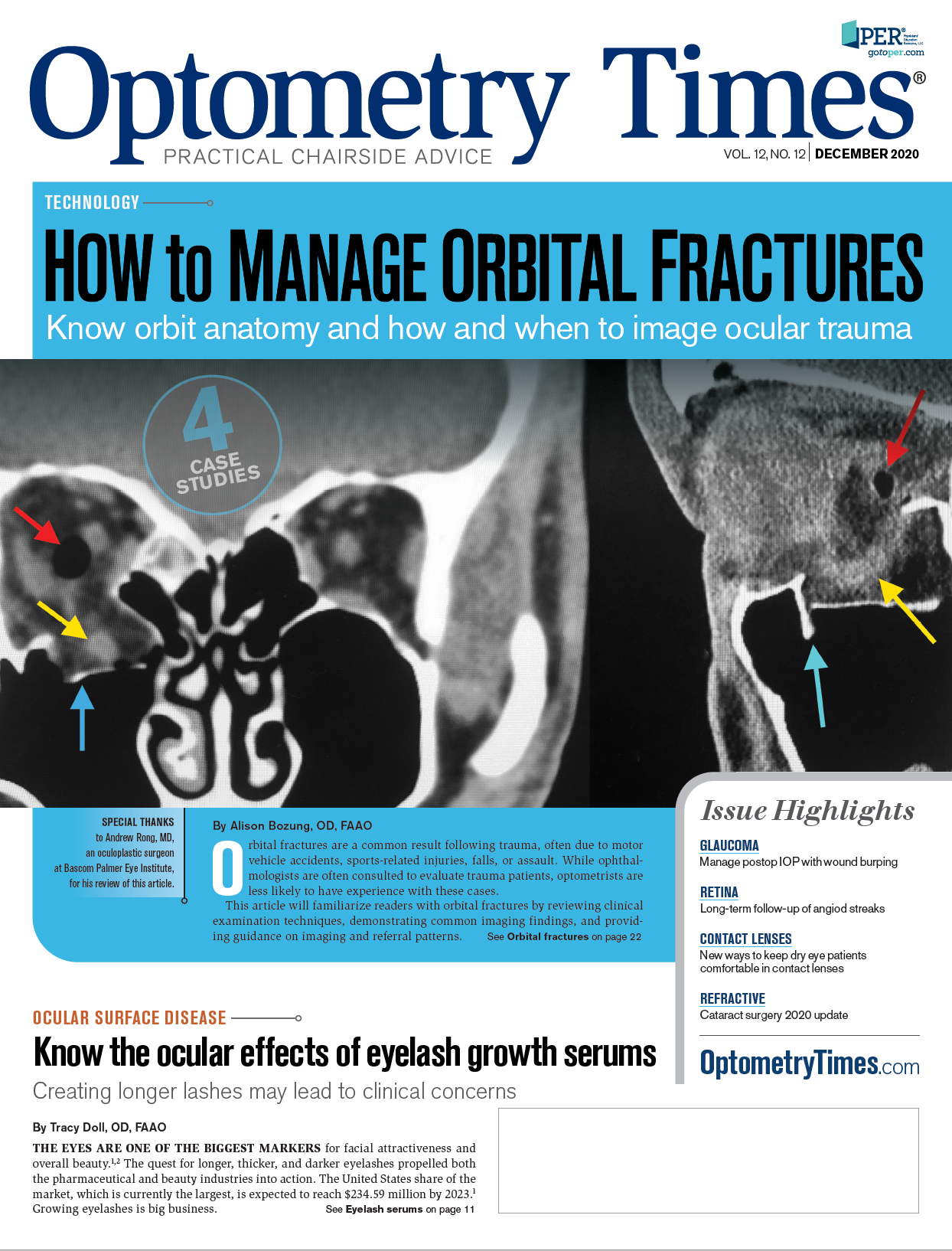How to handle dry eye follow-up visits
Managing ocular surface disease patients depends on symptom severity and treatment choice


If you are just starting a dry eye clinic in a primary-care practice, you may be wondering how to handle follow-up visits. For me, this depends on the severity of symptoms and what treatment you initiate at the current visit.
Let us focus on the initial visit.
Although my current practice accepts only medical insurance, I recently left a practice which accepted both vision and medical insurance. The majority of patients were seen using their vision insurance. In the primary-care setting, I find the following to be more common:
Patients report dry eye symptoms only when asked about them rather than spontaneously or as a chief complaint
Patients are not currently treating their symptoms
Symptoms are more likely related to contact lens discomfort
Patient A
Assume a patient planning to use her vision insurance is in your chair. She presents reporting a need for new bifocals. Upon examination, you note meibomian gland inspissation, neovascularization, and inferior superficial punctate keratitis.
When questioned, the patient reports some discomfort upon awakening and fluctuating vision. She has not been doing anything to relieve these symptoms.
I would express concern about her eyelids and the level of inflammation that I see and explain why we need to remedy this now rather than years from now when it is much worse.
I would start her on omega-3 supplements and instruct her to use an oil-containing artificial tear regularly for 1 month. I would explain that when I see her again in a month, it would be a medical visit and we would bill her medical insurance rather then her vision plan. Many dry eye medications require artificial tears be used as a first-line treatment, and this meets that requirement.
When she returns, my immediate question is, “How are you doing with the omega-3s and the tears? How is your vision? Are your eyes feeling more comfortable?”
If the patient reports she is more comfortable and happy with her eyes and vision using this treatment, I would consider this during the exam to ensure the clinical picture also improved. If both subjective and objective findings are improved, I hold this course if the patient is comfortable with this treatment regime long term.
If objective findings have not improved, no subjective improvement is noted, or the patient says she cannot maintain this treatment long term, I change the treatment.
Some patients are not content with using an over-the-counter tear preparation 4 times daily, and I consider an immunomodulator. I typically have these patients return in monthly intervals until improvement is noted with a treatment regime the patient is comfortable continuing long term. Then I increase the interval to 3 to 4 months.
Patient B
Consider this second patient. This is another patient using vision insurance who needs more contact lenses. He replaces his lenses more often than the planned 30-day replacement because they become “dirty and uncomfortable” around 3 weeks of wear. He wants to change to “a better lens.”
Upon examination, I find mild inflammation, mild superficial punctate keratitis, and mild conjunctival injection. I inquire about artificial tear usage, and he reports no use of lubricants. I suggest we try using tears 4 times per day regularly for a short time to see if this resolves the problem.
I have the patient return in 3 to 4 weeks and reassess. If patient says there is no improvement, or I see persisting keratitis, I will initiate an immunomodulator. I will have the patient return in 6 weeks for reassessment.
Patient C
When do I see a patient more quickly? Consider a third patient presenting with complaints of redness, burning, and best-corrected visual acuity (BCVA) of 20/25. Biomicroscopy reveals significant lid epitheliopathy and lissamine green staining of the lid margin, conjunctivae, and cornea, with mild conjunctival injection.
I initiate treatment using loteprednol, oral doxycycline, and hypochlorous acid lid cleanser. Due to the increased symptoms, I will have this patient return in 3 weeks to ensure my treatment is getting traction.
Whenever I initiate a steroid treatment, I instruct patients to return should their symptoms get worse in any way. When vision is reduced, I perform a refraction to assess BCVA and often find it improves with treatment.
Follow-up interval
I like to see patients monthly until I think the treatment is controlling the subjective symptoms and objective signs. Once I have accomplished control, I ask patients to return in 3 months. If the patients remain controlled, I may extend to 6 months.
Interval exceptions include allergy season for those who report more symptoms during this season, and winter when ocular surface patients typically suffer an increase in symptoms and signs.
I also prefer to see my Medicare patients in December to avoid a deductible payment in January. They appreciate my motivation to reduce out-of-pocket costs, and I have fewer scheduling challenges in January.
Testing
I tend to do a lot of testing to demonstrate effects of ocular surface disease to patients. Initial medical visits include topography and aberrometry, InflammaDry (Quidel), photos of staining or lid disease, meibography, and tear film assessment.
When they return, I often repeat certain tests to demonstrate improvement or lack of progress to encourage compliance with my treatment plan. If a patient requests I repeat a test, I try to accommodate them because I feel this builds the relationship.
Living in Huntsville, AL, I frequently have patients request topography and aberrometry. I will repeat topography and aberrometry if the vision falls at a follow-up visit, and Inflammadry if the symptoms increase. I will repeat photos to demonstrate clinical signs, and tear film assessments to ensure compliance.
Treatments
Some treatments dictate return intervals. I prefer to see all patients using topical steroids every three months to measure their IOP, even those on loteprednol. Alrex (loteprednol etabonate, Baush + Lomb) is the exception, as I often let them go 6 months.
I like to see patients using doxycycline orally every 3 months to assess both efficacy and gastrointestinal concerns, and I prefer to pulse this medication rather than leave them on for prolonged lengths of time. If using azithromycin, I have them use one Z-Pak (Pfizer) at the beginning of each month for 3 months and return.
Glaucoma patients with ocular surface disease are seen every 3 months even when intraocular pressure (IOP) is well controlled to address any progression of ocular surface disease.
When using intense pulsed light (IPL), I typically conduct 4 treatments 1 month apart, then have patients return 1 month after the last treatment to check meibomian secretions and symptomatology before letting them go for 4 to 6 months.
Even patients successfully controlled on immunomodulators are seen twice a year to maintain a strong relationship.
Every so often, I have patients who are anxious about their ocular surface disease request to return more quickly. I typically allow it, which makes them more comfortable. Once they are stable and feel more comfortable, I increase the interval.


Newsletter
Want more insights like this? Subscribe to Optometry Times and get clinical pearls and practice tips delivered straight to your inbox.